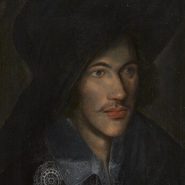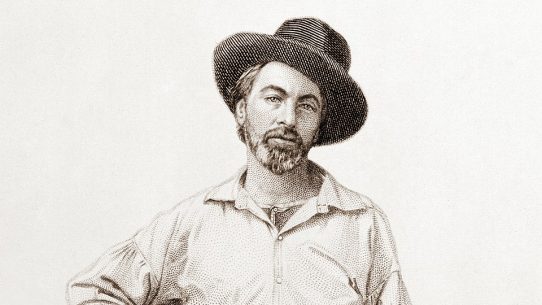George Gordon Byron, 6th Baron Byron (1788–1824), better known as Lord Byron, was one of the most flamboyant and influential poets of the Romantic era. His life was as sensational as his verse — marked by scandal, adventure, and restless genius.
Byron transformed the Romantic hero into a cultural archetype: proud, passionate, defiant, and haunted by inner conflict. His poetry, by turns lyrical, satirical, and epic, fused intellect with emotion and irony with grandeur.
Both a celebrity and an exile, Byron lived his life as art, leaving behind not only masterpieces of English verse but also a legend that continues to captivate readers and writers two centuries later.
Early Life and Education
Byron was born on January 22, 1788, in London, the only son of Captain John Byron, a reckless adventurer known as “Mad Jack,” and Catherine Gordon, a Scottish heiress. His father squandered the family fortune and abandoned them, leaving mother and child to a life of instability.
Born with a clubfoot, Byron suffered physical pain and self-consciousness that shaped both his character and his poetry. At age ten, he inherited the title of Lord Byron and the ancestral estate of Newstead Abbey, which gave him status but little wealth.
He attended Harrow School and later Trinity College, Cambridge, where he distinguished himself by wit, beauty, and excess. Byron’s early poetry reflected his classical education and emerging cynicism. His first volume, Hours of Idleness (1807), drew harsh criticism from the Edinburgh Review, prompting his fiery reply, English Bards and Scotch Reviewers (1809), a brilliant satire that announced his arrival as a formidable literary force. But it was travel — and the freedom it brought — that truly transformed him.
From 1809 to 1811, he journeyed through Portugal, Spain, Greece, and the Near East, experiences that would inspire his later work and lifelong fascination with liberty and the exotic.
Literary Career and Major Works
Byron’s fame exploded in 1812 with the publication of Childe Harold’s Pilgrimage, a semi-autobiographical poem chronicling the wanderings of a disillusioned young nobleman. Its mix of melancholy, grandeur, and confession captivated readers, and Byron famously remarked, “I awoke one morning and found myself famous.” The poem established the archetype of the Byronic hero — a figure of charisma and rebellion, both cursed and exalted by his passions.
Over the next decade, Byron produced an extraordinary range of work. The Giaour (1813), The Corsair (1814), and Lara (1814) continued to explore dark, romantic protagonists driven by love and guilt. His verse dramas Manfred (1817) and Cain (1821) delved deeper into metaphysical rebellion, merging Gothic grandeur with philosophical inquiry. Yet Byron’s greatest poetic achievement may be Don Juan (1819–1824), a sprawling, satirical epic that subverted moral and literary conventions. In it, Byron transformed the legendary libertine into a comic antihero adrift in a corrupt world, using wit and irony to expose hypocrisy in politics, religion, and love.
Byron’s life during this period mirrored his art — brilliant, turbulent, and scandalous. His affair with Lady Caroline Lamb ended in public frenzy, while his marriage to Annabella Milbanke collapsed amid rumors of infidelity and incest. Vilified by London society, Byron left England in 1816, never to return. Exile freed him creatively, and his travels through Switzerland, Italy, and Greece inspired some of his most impassioned work.
Style, Themes, and Influence
Byron’s poetry combines the musicality and emotion of Romanticism with the sharp wit of classical satire. His verse is distinguished by its energy, eloquence, and psychological depth. He was at once the most personal and the most public of poets — transforming his own experiences into myth while dissecting the follies of his age. His recurring themes include the conflict between passion and reason, the quest for freedom, and the tragic beauty of doomed defiance.
The Byronic hero, his most enduring creation, embodies this duality. Figures like Harold, Manfred, and even Don Juan are self-aware, world-weary, and driven by an unyielding need for meaning in a fallen world. They are rebels against both fate and morality — symbols of human grandeur and ruin. Byron’s language reflects this tension: lyrical yet ironic, elevated yet conversational, constantly shifting between intimacy and spectacle.
His influence spread across Europe, shaping writers from Pushkin and Lermontov to Goethe and Hugo. In the Victorian era, Byron’s defiant individuality became a model for artists seeking authenticity in a conformist society. His fusion of romantic passion with irony prefigured modern sensibilities, earning him a permanent place in the lineage of poetic revolutionaries.
Later Life and Legacy
After leaving England, Byron settled in Italy, joining a circle of exiled artists and writers that included Percy Bysshe Shelley and Mary Shelley. His years in Venice and Pisa were among his most productive, marked by literary vigor and emotional turmoil. In 1823, his restless idealism led him to a new cause — the Greek War of Independence against the Ottoman Empire. Byron saw in Greece’s struggle the embodiment of his own ideals of liberty and heroism.
He financed ships, trained troops, and became a national symbol of the Greek resistance. Though plagued by illness and political frustration, he refused to abandon the cause. On April 19, 1824, Byron died of fever in Missolonghi at the age of thirty-six. The news of his death caused an international outpouring of grief. In Greece, he was hailed as a national hero; in England, he was both mourned and mythologized — the scandalous exile turned martyr for freedom.
In death, Byron achieved what he had long sought in life: immortality through passion and action. His legend — half poet, half revolutionary — endures not only in literature but in the cultural imagination. The Byronic hero became a universal archetype, echoed in figures from Heathcliff to Hamlet to modern antiheroes of film and fiction.
Notable Works
Childe Harold’s Pilgrimage (1812–1818)
The Giaour (1813)
The Corsair (1814)
Manfred (1817)
Don Juan (1819–1824)
Cain (1821)
The Prisoner of Chillon (1816)





